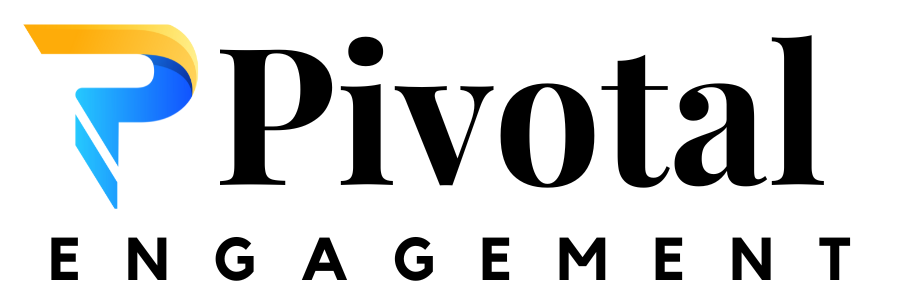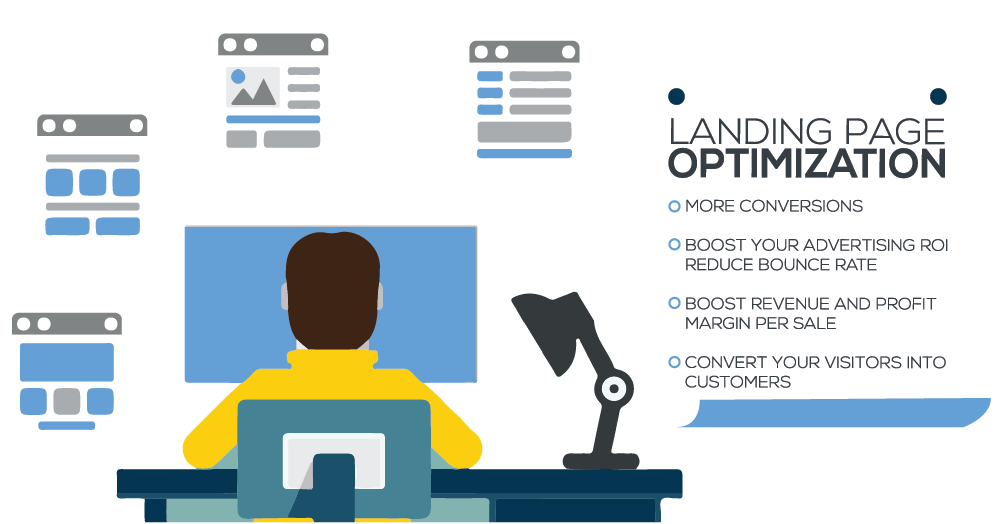Understanding AI-Driven Content and Optimization: Revolutionizing Digital Marketing
In the rapidly evolving digital landscape, businesses are increasingly turning to innovative solutions to stand out and engage their audiences effectively. At the heart of these solutions lies the concept of AI-driven Content and Optimization—a strategy pioneered by Pivotal Engagement, which harnesses artificial intelligence to drive content creation and marketing strategies. This article explores the intricacies of AI-driven content, its benefits, the technologies that enable it, and practical approaches to implementing and measuring these strategies for maximum impact.
What is AI-Driven Content?
AI-driven content refers to materials produced or optimized through advanced algorithms and machine learning techniques. Unlike traditional methods, which rely heavily on human input, AI-driven content can analyze vast quantities of data to generate insights, predict audience preferences, and formulate tailored marketing messages. This content can range from blog posts, articles, social media updates, to personalized product recommendations, enhancing the user experience by providing relevant and timely information.
Benefits of Optimization in Marketing
The integration of AI-driven strategies into marketing offers numerous benefits, including:
- Enhanced Efficiency: AI algorithms can automate time-consuming tasks such as keyword research and content generation, allowing marketers to focus on strategic decision-making.
- Improved Targeting: AI analyzes user behavior and preferences to deliver highly personalized content, ensuring that messages resonate with specific audience segments.
- Data-Driven Insights: By leveraging big data, AI can uncover trends and patterns that inform marketing strategies, optimizing campaigns for better performance.
- Consistent Quality: AI tools help maintain a consistent tone, style, and relevance across all content, enhancing brand voice.
- Cost-Effectiveness: Automating content creation and management can result in lower operational costs while maximizing reach.
Key Technologies Behind AI-Driven Solutions
Several technologies underpin the effectiveness of AI-driven content and optimization strategies:
- Natural Language Processing (NLP): This technology enables machines to interpret and generate human language, allowing for the creation of coherent, contextually appropriate content.
- Machine Learning: Algorithms that improve over time based on input data, allowing AI systems to adapt to changing user behaviors and preferences.
- Predictive Analytics: By analyzing historical data, AI can predict future outcomes, such as customer behavior, leading to more effective marketing strategies.
- Content Management Systems (CMS): AI-powered CMS can enhance content organization, making it easier for marketers to manage and optimize their digital assets.
Implementing AI-Driven Strategies
Creating Data-Driven Content Plans
Developing a successful data-driven content plan requires several steps:
- Define Clear Objectives: Establish what you want your AI-driven content strategy to achieve, whether it’s increasing engagement, generating leads, or improving customer retention.
- Understand Your Audience: Use AI analytics tools to gather demographic and psychographic data, enabling you to segment your audience effectively.
- Content Ideation: Utilize AI tools for topic generation, ensuring that ideas align with audience interests and search trends.
- Set a Distribution Strategy: Plan how and where to distribute your content, using AI to recommend platforms based on audience behavior.
Tools and Platforms for Optimization
Numerous tools can assist in optimizing AI-driven content strategies:
- Google Analytics: This tool provides insights into website traffic and user engagement, aiding in the evaluation of content effectiveness.
- SEMrush: A comprehensive tool for keyword research, competitive analysis, and content optimization.
- Grammarly: AI-driven writing assistant that suggests style improvements and checks for grammatical accuracy, ensuring high-quality content.
- ChatGPT: A powerful tool for content generation, ideation, and brainstorming. ChatGPT can assist in crafting compelling articles, blog posts, and more by leveraging AI to understand context and provide high-quality writing suggestions.
Step-by-Step Guide to Implementation
Implementing AI-driven strategies in your marketing approach requires careful consideration:
- Assess Current Capabilities: Take stock of existing technologies and marketing strategies to identify gaps where AI can add value.
- Invest in Tools: Choose the right AI tools that fit your objectives and budget, considering factors like scalability and user-friendliness.
- Train Your Team: Provide training on AI tools and strategies, fostering a culture of innovation and adaptability.
- Monitor and Optimize: Continuously track performance metrics and make necessary adjustments based on data insights.
Measuring Success with AI-Driven Insights
Key Performance Indicators (KPIs)
To evaluate the effectiveness of your AI-driven content strategy, you must track key performance indicators:
- Engagement Rates: Measures how audiences interact with your content, indicating its relevance and effectiveness.
- Conversion Rates: Tracks the percentage of users who complete a desired action, crucial for assessing ROI.
- Traffic Sources: Understanding where your traffic comes from helps refine distribution strategies.
- Bounce Rates: Monitor how many visitors leave after viewing only one page to identify content issues.
Analyzing Engagement Metrics
Engagement metrics provide insights into how content resonates with the audience:
- Time on Page: Indicates how long visitors stay engaged with your content, revealing its quality and relevance.
- Social Shares: The frequency of social media shares can reflect content appeal and help expand reach.
- Comments and Interactions: User-generated content through comments can offer qualitative data on user sentiment.
Adapting Strategies Based on Insights
AI provides actionable insights that allow marketers to adapt strategies effectively:
- Iterate on Content: Use engagement metrics to refine content; create more of what works while eliminating poorly performing pieces.
- Test Different Approaches: A/B testing can help identify which headlines, formats, and calls to action resonate best with the audience.
- Stay Agile: The digital marketing landscape changes rapidly; stay responsive to trends and shifts in audience behavior.
Case Studies: Success Stories of AI Implementation
Industry Leaders in AI-Driven Optimization
Several businesses have successfully utilized AI to enhance their marketing efforts:
- Netflix: Uses AI algorithms to recommend content based on viewing history, keeping users engaged and subscribed.
- Amazon: Leverages AI for personalized shopping experiences, enhancing customer satisfaction and loyalty.
- Coca-Cola: Utilizes AI to analyze customer feedback, enabling the company to innovate products based on consumer insights.
Real-World Examples of Effective Strategies
Implementing AI strategies can yield measurable success:
- BuzzFeed: Leveraging AI-powered tools for topic selection has allowed the company to produce content that aligns with audience interests, driving higher engagement.
- HuffPost: Uses AI to analyze reader preferences and optimize headlines and article structures, resulting in improved click-through rates.
- Forbes: Incorporates AI to curate news and content, ensuring relevance and enhancing user experience.
Lessons Learned and Best Practices
Insights from these case studies reveal essential best practices:
- Prioritize Data Quality: High-quality data is fundamental for accurate AI insights; invest in data management and cleaning processes.
- Integrate AI with Human Creativity: While AI excels in data analysis, human creativity is crucial for crafting compelling narratives.
- Be Transparent: Communicate how AI is used in content creation and marketing strategies to build trust with audiences.
Next Steps with Pivotal Engagement
For businesses in Peoria looking to enhance their marketing strategies, partnering with Pivotal Engagement is a pivotal step towards success. Their expert guidance and comprehensive services can provide the support businesses need to navigate the complexities of modern marketing.
Consultation Process Overview
The first step in engaging with Pivotal Engagement is a consultation process. This initial meeting allows business owners to discuss their objectives, existing challenges, and future aspirations. The team at Pivotal Engagement then conducts a thorough assessment to evaluate the business’s marketing needs and tailor solutions accordingly.
This consultation is crucial not only for establishing rapport but also for ensuring that both parties are aligned in terms of goals and expectations for success.
Tailoring Solutions to Fit Client Goals
Once the consultation is complete, Pivotal Engagement crafts a customized marketing strategy designed to meet the specific goals of each client. This unique approach ensures that resources are allocated towards initiatives with the highest potential for impact, positioning clients for success in their marketing endeavors.
By integrating different services—ranging from digital marketing tactics to traditional outreach methods—clients benefit from a 360-degree approach to marketing that enhances overall effectiveness.
Long-Term Partnership and Support
Pivotal Engagement understands that marketing is not a one-time event but an ongoing journey. Their commitment to fostering long-term partnerships ensures that clients receive continuous support and analytical insights to navigate the evolving landscape effectively.
Through regular check-ins, strategy updates, and performance assessments, businesses can adjust their strategies dynamically, sustaining momentum and capturing growth opportunities as they arise.
In conclusion, Peoria Marketing Agency Pivotal Engagement offers comprehensive marketing solutions tailored to the unique landscape of Peoria businesses. By understanding marketing needs, leveraging data-driven insights, and adopting innovative strategies, local businesses can thrive in an increasingly competitive environment.



